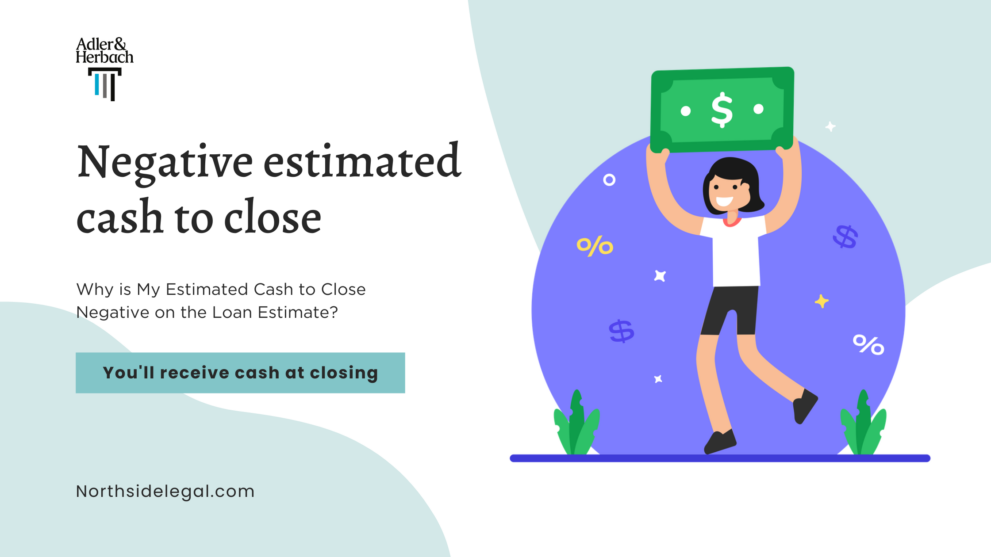When applying for a mortgage refinance, it can be confusing to see a negative number for your “estimated cash to close” on the initial Loan Estimate document. If the cash to close is negative, does it mean the lender owes you money at closing? Or are you expected to bring additional funds?
Why Is My Estimated Cash To Close Negative On The Loan Estimate?
Simply, it means the lender credits are more than your loan costs and you will receive cash on the closing day. But you may incur higher interest charges for this.

What a Negative Estimated Cash to Close Means
In simple terms, a negative estimated cash to close means you will likely receive money back at your refinance closing.
But where does this cash credit come from?
A few common scenarios:
1. Lender Credits
The mortgage lender may offer credits towards your closing costs on a refinance. These credits offset your out-of-pocket costs, and result in a lower amount due from borrower – or even a negative cash to close.
For example, say your closing costs are $2,000, but the lender gives a $4,000 lender credit. Your cash to close would now show as -$2,000 (= closing costs – lender credit), meaning funds come back to you.
2. Escrow Surplus
If you had already paid property taxes or home insurance premiums for the coming year, a credit may show for the unused portion you overpaid. This surplus goes back to you at closing.
3. Prepaid Interest Refund
You will receive credit at closing for any prepaid interest on your current mortgage, proportional to how many days are left in the month after you refinance. This interest credit contributes to a lower or negative cash to close.
In all these cases, the bottom line is that you should be getting money back, not having to pay extra funds out of pocket. Double check credits with your loan officer if it’s unclear.
Why the Confusion?
A negative cash to close amount confuses many borrowers, because it seems to imply you will bring negative dollars to closing! In reality, a negative number means funds will be coming to you, not from you.
But lenders are required to disclose even credits and surplus amounts under “cash to close” on the Loan Estimate. This catches people off guard. It may be more accurate to interpret a negative cash to close as “funds due back to the borrower.”
What to Look Out For?
Be sure the credits driving a negative cash to close are valid and documented. Some key indicators:
- Review the details – Are lender credits listed? What explains the surplus funds?
- Ask your loan officer to confirm credits in writing. Do they know the source?
- Ensure any credits carry over to your final Closing Disclosure form as well.
A truly negative cash to close amount is no cause for concern provided it is accounted for by credits. But do your due diligence to understand where it comes from!
Learn more about What is cash to close? Cash to close to borrower vs from borrower. How to calculate cash to close?

